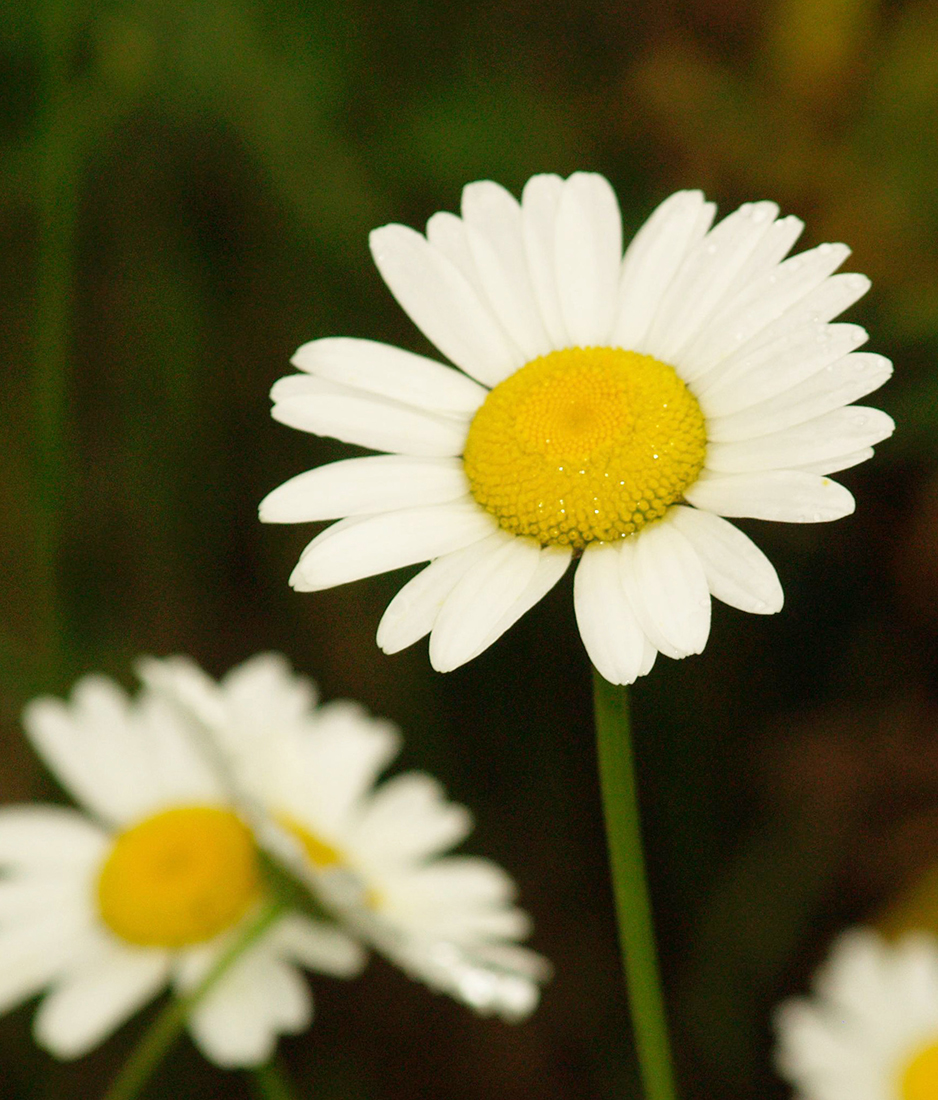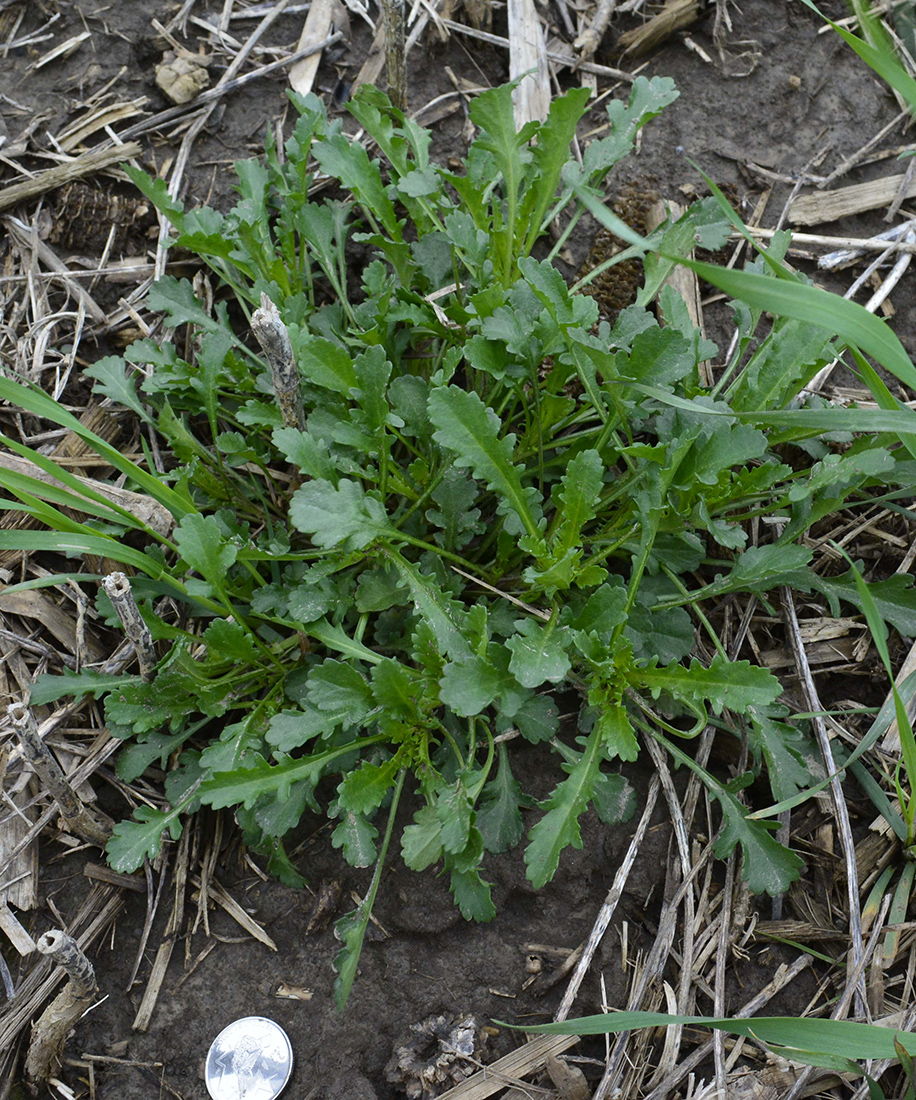Ox-Eye Daisy
- Composite or aster (Asteraceae family):
- Leucanthemum vulgare Lam.
- EPPO code:
- CHYLE
- Other names:
- Field daisy, white daisy, whiteweed, poorland flower, marguerite.
Species information
- Lifecycle:
- Perennial.
- Propagation:
- Reproduces by seed and underground rhizomes.
- Emergence:
- Seedlings emerge in early spring but also in the fall.
- Habitat:
- Ox-eye daisy is commonly found in waste areas, meadows, pastures and lawns, but can be found in cultivated fields, usually on heavier textured soils.
Identification clues
Leaves
- Cotyledons:
- Oval and narrowing into a short petiole.
- Young leaves:
- The first seedling leaves of ox-eye daisy are spoon-shaped and lobed with shallow wavy teeth. At first, they are opposite, but they then alternate and produce a basal rosette.
- Mature leaves:
- Basal rosette leaves are smooth, hairless, spoon shaped, lobed and wavy toothed. Stem leaves are alternate and more sharply toothed.
Mature plant
- Stem:
- The stem of ox-eye daisy is erect and grows between 20 and 90 cm tall.
- Flowers:
- Its flower heads (inflorescences) are daisy-like with yellow centers (disk florets) and 20–30 white, petal-looking ray florets. The flowerhead is 2.5–5 cm in diameter.
- Root:
- Ox-eye daisy has shallow fibrous roots with short rhizomes that hold soil quite efficiently.
Often mistaken for
I know it's not Scentless chamomile because although the flower heads appear similar, ox-eye daisy’s inflorescence will have 20–30 white ray florets. While scentless chamomile has 10–20 ray florets. The leaves of each plant are drastically different; scentless chamomile’s are finely divided, while the leaves of ox-eye daisy are entire or broadly divided.




Updated: January 13, 2023
Published: January 13, 2023